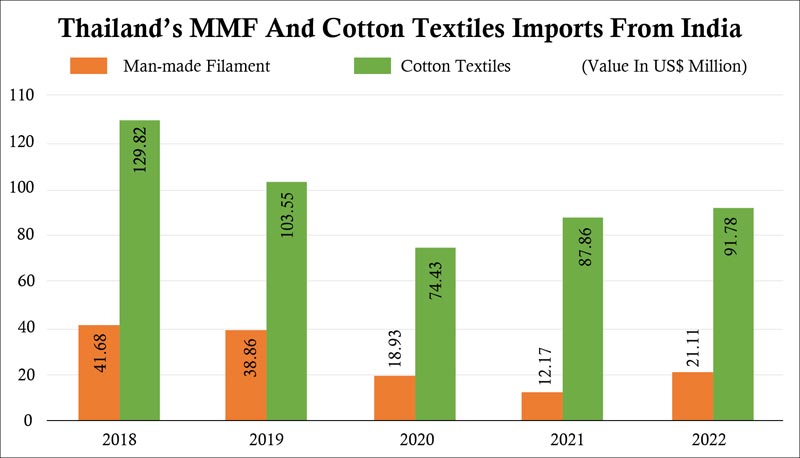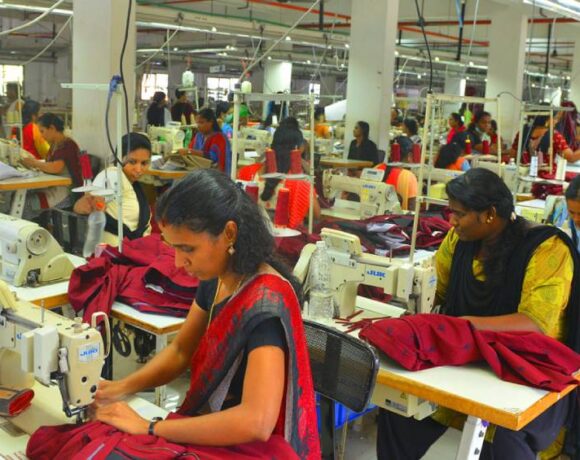Thailand – A Potential Leading Market For India’s MMF And Cotton Textiles

Thailand is a popular destination known for its royal palaces, temples, mountains, islands, cuisine and vibrant night life. But Thailand is also well-known for its shopping economy and a shopaholic will get the best and cheapest garments in the Thailand market.
Talking about clothes, you should know that Thailand is well-known producer of fabrics, sportswear and apparels. The textile and apparel (T&A) industry in Thailand plays an essential role in the country’s export earnings. The T&A industry in the country produces a wide range of products – from synthetic yarns to wool fabrics, cotton bed linens to technical textiles and T-shirts to high-end fashion garments.
Thailand currently has around 4,500 textile and apparel manufacturers employing nearly one million workers. Most of the manufacturers are located around Bangkok and in eastern Thailand. These manufacturers are engaged in different activities, ranging from production of man-made fibres, spinning and weaving to dyeing and printing.
According to ITC Trade Map statistics, Thailand’s T&A imports in 2022 rose by 14.1% to US$ 5782.29 million over the previous year. Man-made filament (MMF) is the top imported commodity with a share of 17% of Thailand’s total T&A imports.
China remains the largest T&A supplier to Thailand. In 2022, China shipped T&A goods worth US$ 2595.76 million to Thailand and registered a growth of 10.55% over the previous year. Currently, China’s share is 45% of the total T&A imports of Thailand. The other top suppliers are Vietnam, Japan, Taipei (Chinese) and Australia. India is the ninth largest supplier to the country.
In the T&A sector, Thailand majorly imports MMFs, cotton textiles, apparels and textile fabrics. MMF imports totaled US$ 961.53 million with a growth of 9.19% in 2022 over the previous year. MMFs hold a major share of 17% of the total T&A imports by Thailand. China, Japan, Taipei, Vietnam and Indonesia are the top five MMF suppliers to Thailand.
India is the seventh largest MMF supplier to Thailand and the country’s imports from India totaled US$ 26.53 million, a growth of 33.54% in 2022 over the previous year. Under MMF, India majorly exports woven fabrics of synthetic filament yarn, which grew by 95% in 2022 to US$ 22.13 million over the previous year.
The PLI scheme launched by India, especially focusing on expanding the MMF segment, will give it a major growth push in the high value segment and generate new opportunities for trade and employment. With the increasing push for MMFs in India, manufacturers need to focus on Thailand and increase India’s share in the MMF export segment.
Thailand imports loads of cotton from the world. The imports of cotton textiles totaled US$ 931.33 million, a growth of 64% in 2022 over the previous year. Australia is now the largest cotton textiles supplier to Thailand. Cotton textile imports from Australia totaled US$ 241.37 million, with growth 166.3% in 2022 over the previous year. In the previous years, USA was the leading supplier to the Thai market. It’s only in 2022 that Australia topped the list.

According to a US Department of Agriculture report, local cotton spinners are importing more of Australian cotton instead of utilising US cotton due to the prolonged logistical challenges of getting product from the USA, including continued container shortages. China was a key market for Australian cotton, but since mid-2021, China ceased buying cotton from Australia over a dispute between the two nations regarding COVID-19. Thai spinners enjoy the availability of Australian cotton whose shipments are more dependable and have shorter transit times than shipments from the US.
India is now the fourth largest cotton supplier to Thailand. India exported cotton textiles worth US$ 91.78 million with growth of 4.46% in 2022 and took 10% share of total cotton imports of Thailand. Comparing 2022 imports to 2019, cotton supplies from India are gradually sinking and have registered a fall of 29.3%. India is now the largest cotton producing country and Thailand is close to India, which means the transit time is shorter.
Indian textile products are high in demand in Thailand and around the world due to their quality and authenticity. Exporters must take advantage of these factors and increase their textile exports to Thailand.














